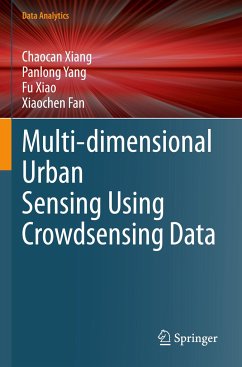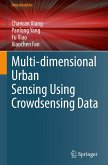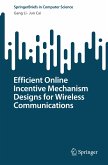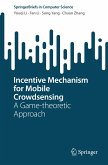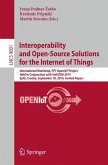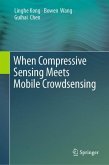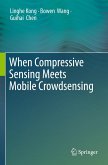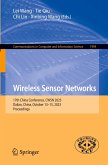Chaocan Xiang is an Associate Professor at the College of Computer Science, Chongqing University, China. He received his bachelor's degree and Ph.D. from Nanjing Institute of Communication Engineering, China, in 2009 and 2014, respectively. He subsequently studied at the University of Michigan-Ann Arbor in 2017 (supervised by Prof. Kang G. Shin, IEEE Life Fellow, ACM Fellow). His research interests mainly include UAVs/vehicle-based crowdsensing, urban computing, Internet of Things, Artificial Intelligence, and big data. He has published more than 50 papers, including over 20 in leading venues such as IEEE Transactions on Mobile Computing, IEEE Transactions on Parallel and Distributed Systems, IEEE INFOCOM, and ACM Ubicomp. He has received a best paper award and a best poster award at two international conferences.
Panlong Yang is a full Professor at the University of Science and Technology of China. He has been supported by the NSF Jiangsu through a Distinguished YoungScholarship and was honored as a CCF Distinguished Lecturer in 2015. He has published over 150 papers, including 40 in CCF Class A. Since 2012, he has supervised 14 master's and Ph.D. candidates, including two excellent dissertation winners in Jiangsu Province and the PLA education system. He has been supported by the National Key Development Project and NSFC projects. He has nominated by ACM MobiCom 2009 for the best demo honored mention awards, and won best paper awards at the IEEE MSN and MASS. He has served as general chair of BigCom and TPC chair of IEEE MSN. In addition, he has served as a TPC member of INFOCOM (CCF Class A) and an associate editor of the Journal of Communication of China. He is a Senior Member of the IEEE (2019).
Fu Xiao received his Ph.D. in Computer Science and Technology from the Nanjing University of Science and Technology, Nanjing, China, in 2007. He is currently a Professor and Dean of the School of Computer, Nanjing University of Posts and Telecommunications. He has authored more than 60 papers in respected conference proceedings and journals, including IEEE INFOCOM, ACM Mobihoc, IEEE JASC, IEEE/ACM ToN, IEEE TPDS, IEEE TMC, etc. His main research interest is in the Internet of Things. He is a member of the IEEE Computer Society and the Association for Computing Machinery.
Xiaochen Fan received his B.S. degree in Computer Science from Beijing Institute of Technology, Beijing, China, in 2013, and his Ph.D. from the University of Technology Sydney, NSW, Australia, in 2021. His research interests include mobile/pervasive computing, deep learning, and Internet of Things (IoT). He has published over 25 peer-reviewed papers in high-quality journals and IEEE/ACM international conference proceedings.
Panlong Yang is a full Professor at the University of Science and Technology of China. He has been supported by the NSF Jiangsu through a Distinguished YoungScholarship and was honored as a CCF Distinguished Lecturer in 2015. He has published over 150 papers, including 40 in CCF Class A. Since 2012, he has supervised 14 master's and Ph.D. candidates, including two excellent dissertation winners in Jiangsu Province and the PLA education system. He has been supported by the National Key Development Project and NSFC projects. He has nominated by ACM MobiCom 2009 for the best demo honored mention awards, and won best paper awards at the IEEE MSN and MASS. He has served as general chair of BigCom and TPC chair of IEEE MSN. In addition, he has served as a TPC member of INFOCOM (CCF Class A) and an associate editor of the Journal of Communication of China. He is a Senior Member of the IEEE (2019).
Fu Xiao received his Ph.D. in Computer Science and Technology from the Nanjing University of Science and Technology, Nanjing, China, in 2007. He is currently a Professor and Dean of the School of Computer, Nanjing University of Posts and Telecommunications. He has authored more than 60 papers in respected conference proceedings and journals, including IEEE INFOCOM, ACM Mobihoc, IEEE JASC, IEEE/ACM ToN, IEEE TPDS, IEEE TMC, etc. His main research interest is in the Internet of Things. He is a member of the IEEE Computer Society and the Association for Computing Machinery.
Xiaochen Fan received his B.S. degree in Computer Science from Beijing Institute of Technology, Beijing, China, in 2013, and his Ph.D. from the University of Technology Sydney, NSW, Australia, in 2021. His research interests include mobile/pervasive computing, deep learning, and Internet of Things (IoT). He has published over 25 peer-reviewed papers in high-quality journals and IEEE/ACM international conference proceedings.

